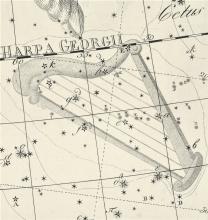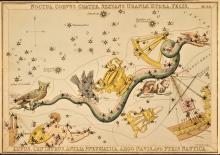Listen to today's episode of StarDate on the web the same day it airs in high-quality streaming audio without any extra ads or announcements. Choose a $8 one-month pass, or listen every day for a year for just $30.
You are here
Faint Cats
Ancient skywatchers drew 48 constellations that are still in use today. Most of them consisted of patterns of bright stars that formed a somewhat recognizable figure. An example is Leo, the lion, which is low in the east at nightfall. Its “heart” is the star Regulus. Its body extends below Regulus, with its head and mane to the left of the bright star.
The dark regions between those patterns were left alone. But a couple of astronomers filled in many of those gaps in the 17th and 18th centuries.
Johannes Hevelius, for example, drew 10 constellations. Seven of them are still in use today. And two of them are cats that align to the upper left of Leo: Lynx and Leo Minor, the little lion. Leo Minor abuts Leo, with Lynx above the little lion.
Hevelius didn’t name Lynx for its resemblance to the cat, though. Its brightest stars form a faint zigzag that looks more like a snake. Instead, the constellation’s name is a bit of a joke. Hevelius wrote that skywatchers would need the eyesight of a lynx to see the constellation’s stars. But he was challenging them to give it a try.
The brightest stars of the two faint cats are similar. Each star is heavier than the Sun, and much farther along in life. That’s caused the stars to puff up to giant proportions. The brightest star of Lynx, in fact, is more than 50 times the Sun’s diameter, and hundreds of times brighter. Even so, it’s so far away that it’s pretty faint — a target for the eyes of a cat.
Script by Damond Benningfield





